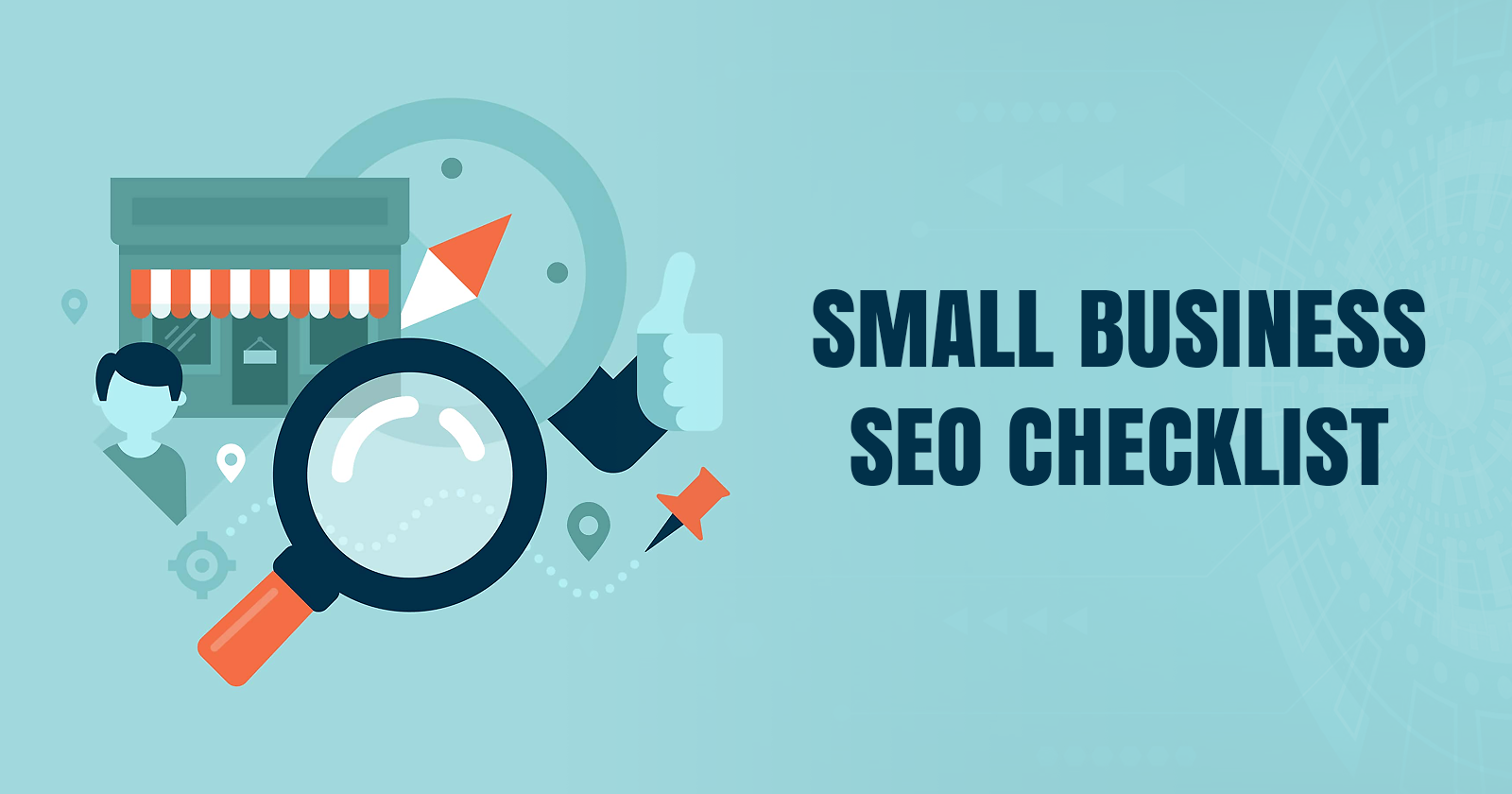If you have just started your own business and want to know what steps to take first, or if you are an agency that helps brick-and-mortar stores with digital marketing strategies, small business SEO is the answer.
Small business SEO is evolving as the Google algorithm incorporates machine learning alongside the core algorithm. With Core Web Vitals as a clear ranking factor in 2023, SEO for your small business website has become even more important. The importance has also grown in the past few years due to the rise in mobile internet users.
Mobile eCommerce statistics clearly show that customers now rely on the internet for product discovery and can influence their buying decisions. If your website is ranking on popular keywords that your customers search, then there is a high chance that they will consider purchasing your product or service.
If you are just starting and feeling tight on budget, there are several DIY small business SEO tips to follow. You will be on your way to increased traffic and lead generation if you follow this small business SEO checklist.
What is Small Business SEO?
Before we get into the details about the small business SEO checklist, let’s first make sure you understand what it is. Many business owners regard search engine optimization (SEO) as a mystery that can only be solved by those with insider knowledge. Yes, choosing an affordable SEO service company can definitely help, but knowing the fundamentals is essential, and they can be broken down into simple concepts.
Even if you optimize for search engines, search engines base their ranking algorithms on user behavior in order to be the most trusted source of information available. This means that, at the end of the day, you are really just optimizing for search engine users, or people who are similar to you.
SEO is a set of efforts that work together to help search engines like Google find your business website, recognise it as trustworthy, organize the information you publish on it, and present it to users searching for it.
How SEO Can Help Small Businesses?

When compared to other digital marketing channels, SEO combined with content marketing provides the highest return on investment (ROI). In fact, businesses with good content could generate more leads than those without.
SEO is a long-term strategy, it can drive stable revenue with minimal intervention. A hands-off approach to marketing makes the most sense for small businesses without a designated marketing manager. Furthermore, small business SEO is a type of inbound marketing that attracts customers who are already looking for you.
Paid ads, on the other hand, provide instant visibility, but they raise costs with each click and require constant oversight to perform well.
Both email marketing and social media management require regular attention to ensure successful campaigns.
This infographic shares twenty nine steps small business SEO checklist that will help your website see soaring rankings.

Fundamental Small Business SEO Checklist

Setup Google Analytics & Google Search Console
Google Analytics is a free web analytics service from Google that provides unique insights for your business. After launching your website, every business must immediately configure analytics. It is a data-driven platform that SEO professionals and businesses use to track and measure all website traffic from various sources and understand your customers’ behavior.
Google provides this tool to help you better analyze and understand your customers so that you can use unique insights to improve your website. Additionally, you can improve the user experience on your website with the help of the data you gather.
Google Analytics also provides strong reporting capabilities, such as Real-Time Reports, User Flow Reports, Audience Reports, Advertising Reports, Acquisition Reports, and Behavior Reports, and uncovers your business insights and performance all in one place.
With advanced filters and manipulations, funnel analysis, segmentation, visualization, and monitoring, you can organize and visualize your data in a variety of ways. Search Console, on the other hand, is a free tool that allows you to track the keywords for which you rank as well as monitor and troubleshoot your site.
Submit a Sitemap
Sitemaps function similarly to an organized index of a book with thousands of pages. The index provides a reference to a specific page or sub-topic that you are looking for, allowing you to easily navigate to that page.
Similarly, a sitemap is a file that contains an organized list of all the URLs that you must submit to Google in order for the search engine to crawl and index all of the URLs. And these URLs typically include all of your website’s pages and posts.
According to Google, a website’s URL structure should be as simple as possible and in words rather than long ID numbers.
As a result, keep a simple URL structure that at the very least identifies a keyword or phrase. You can create a sitemap manually or with third-party tools, and for large sites, you can create multiple sitemaps. For example, if you use WordPress, you can easily create sitemaps for your website by using the Yoast SEO or Rank Math plugins.
Set Up a Robots.txt file
The Robots.txt file is a set of instructions used to prevent or allow Google to index specific pages on your website. It is a simple text file that is created to take control of your site’s URL from crawling and indexing your pages in order to determine what to crawl and index and what not to crawl and index.
For example, if you do not want Google to crawl or index your privacy page, simply disable it using the instructions below. However, this does not imply that you are deindexing your pages. It simply means that you do not want certain pages to appear in Google search because they provide no value to users.
And if you want to disallow multiple pages, just add them as below and you are done.
On the frontend, the robots.txt file can be found at https://www.domain.com/robots.txt.
You must have access to your C Panel and File Manager in order to edit your file. If you cannot find it in your file manager, check the hidden files box.
Keyword Research

Identify Your Brand Keywords
Keyword research will undoubtedly be the most time-consuming and important part of your SEO checklist. Because you cannot optimize your content for search engines unless you know what your competitors are typing in Google to search for a specific product or service that you offer.
The number of keywords that you will likely find can be overwhelming depending on the type of products and services that you offer. Because if your products or services fall into the broadest category, there are likely millions of businesses that provide the same products and services as you.
In that case, your business keywords that will drive the most traffic may be very competitive, and following them would be a waste of time. So, as an alternative, you can conduct research on less competitive keywords for which you may or may not compete.
However, this does not imply that you select irrelevant keywords with no traffic. So look for keywords that have a good search volume, are neither high nor low in search volume, and are also within your reach. Spending some quality time to find the most appropriate keyword for your business is therefore advised.
Develop a Keyword Research Strategy
You should first use keyword research tools to understand keywords that are relevant to your products or services. You can do this by using the free Google Keyword Planner tool.
By using the discover new keywords option in the keyword planner, you can get a good idea of the traffic that specific keywords have. Alternatively, you can begin with your website and, based on the content of your website, Google keyword planner will pull the keywords that are relevant to you.
There are many keywords that may be unfamiliar to you, but the most basic form of keywords on which small businesses can focus are:
- Long Tail Keywords
- Product Specific Keywords
- LSI Keywords
- Customized Keywords
Many of these keywords will simply align with your business if you have done your keyword research properly.
But how you use those keywords is important for your business. Creating a keyword roadmap simply means understanding which keywords to target and optimize, what content to produce, and where to add more pages.
Every page you create should serve a purpose centered on a base keyword or keywords, as well as some additional LSI keywords that amplify and closely relate to your base keywords.
Determine Your Competitors
You should identify your competitors to better understand why they are ranking and what you should do to compete with them.
Identifying your competitors will force you to learn and improve from mistakes that are preventing you from positioning your site on SERPs. And to show you how difficult it is to rank for the target keywords that your competitors are ranking for.
In this case, you must establish authority for your website.
Technical SEO

Use HTTPS Whenever Possible
Because user experience is one of the most important ranking factors for SEO, you must prioritize the technical aspects of your SEO Checklist. The process of optimizing your website for all technical errors that a user encounters while visiting or landing on your site is known as technical SEO.
HTTPS is an acronym for HyperText Transfer Protocol and Secure Socket Layer (SSL) or Transport Layer Security (TLS). Security is a major concern on the internet. So, HTTPS should be enabled on your website because it informs Google that your site is encrypted.
This is typically a website authentication and security protocol that is widely implemented in browsers and Web servers. It also serves as one of Google’s positive ranking factors. This is also an important component of your Technical SEO Checklist.
However, having an SSL certificate does not guarantee complete security. The HTTPS protocol may indicate that your website is at least secure. Simply looking at the URL in your browser’s address bar will tell you whether or not your site has a security layer. A closed lock indicates that your SSL certificate is secure.
Improve The Performance of Your Website
Slow page speed, poor page experience, redirect issues, broken links, crawl errors, page depth, multiple domain versions, unfriendly URLs, unfriendly with mobile devices, and so on are examples of errors. So, if you discover these errors on your website, it is time to fix those errors.
The speed at which your web pages download when a user clicks on one of your website’s links indicates the performance of your website.
As a result, website performance essentially indicates how fast your website is. If your website’s interactive time frame is less than 5 seconds, Google and People will favor it. Otherwise, visitors will abandon your site, resulting in lower traffic, lower conversion, and lower sales.
So, what parameters should you examine in order to improve the performance of your website?
A variety of factors influence the performance of your website. However, it essentially entails optimizing your websites for factors such as:
- SEO friendly URLs
- Header Tags and Titles
- Outbound Links
- Architecture of the Website
- Design of a Website
- Making Use of Google Fonts
- Page Size Reduction
- HTTP Request Reduction
- Page Caching Optimization
- Increasing Page Load Speed.
Increase The Speed of Your Website
Improving your website’s page speed is critical in Technical SEO. Because quick page delivery indicates that you are providing a good User Experience to your users.
Google Pagespeed Insights is a free tool that analyses your website for various page speed issues. The Google Search Console Core Web Vitals metrics provide page experience about your website’s URL for both Mobile and Desktop. Slow page speed could be possible for a variety of reasons.
If you have a high number of Poor URLs, it is time to improve them, unless it displays a green signal indicating that your URLs are good. Identifying these URLs and improving poor page speed will improve your ranking signals.
Google recently released the Google Page Experience Update 2020 as a Google Ranking Factor and SEO Improvement. It includes three user-centric metrics for determining page speed: loading, interactivity, and visual stability.
Enhance Mobile Compatibility
Mobile devices account for more than half of all internet activity. The most important aspect of your Technical SEO Checklist is that it is mobile-friendly. However, why should you be concerned with making your website mobile-friendly?
This is simply because Google has switched all websites to Mobile-First Indexing for Mobile-Based Devices. That is, whenever a mobile search query is made. For mobile web content, Mobile-First Indexing will automatically redirect your domain to a mobile version of your website.
As a result, if your website has not been optimized for mobile, your chances of ranking on mobile will suffer. So, how do you create a successful mobile experience? Follow mobile optimization best practices for viewports, fonts, buttons, and Tap Target Links.
Find & Fix Crawl Errors & Redirects
In the Index Section of Google Search Console, your website URLs are covered. This report section also includes four coverage areas: Errors, Valid with warnings, Valid, and Excluded.
So, why are these errors showing up?
These errors are caused by making changes to URLs, deleting URLs, and failing to fix your URL links.
As a result, take the time to review your coverage report in Search Console for any errors. And locate and investigate the source of excluded URLs in greater depth, from 404 errors to incorrectly canonicalized pages.
Server errors, a page with a redirect, not found(404), and so on are examples of basic website URL indexing issues.
You should thoroughly check these errors as part of your Technical SEO Checklist.
On-Page SEO

Locating and Correcting Duplicate, Missing, and Truncated Title Tags
On-page SEO is the process of optimizing your website’s content for search engines and humans. It also includes various front-end and back-end website components. On-page SEO is all about improving your website’s SEO so that Google can index your page and understand what it’s about.
Title tags are extremely important for your pages and posts because they significantly increase CTR. To optimize your Title Tags, make sure your pages and posts have no missing, duplicate, or truncated tags.
Your meta title should not be too long or too short, so keep your titles under 60 characters. Longer title tags look bad on SERPs because they cut off the text after 60 or more characters. Use appropriate keywords and power words in your Meta Title to help people understand what your page or post is about.
Locating and Correcting Duplicate, Missing, and Truncated Meta Descriptions
Writing and editing meta descriptions, as well as creating descriptive link texts, are essential components of your On-Page SEO strategy. Search engines prioritize user intent and relevance. As a result, when writing and editing Meta Text and Titles, Meta Descriptions, Image Alt Text, Headings and Paragraphs, and Link Descriptions, your topic should be clearly identified.
Although writing an effective meta description helps Google and people understand your post and pages in greater detail. Meta Description is not a ranking factor for Google’s long years.
However, Google and other search engines frequently display meta descriptions beneath your site’s title tag and URL in the SERPs.
As a result, optimizing your meta description can result in a higher CTR. Because it adds beauty and relevance to your page and posts for audiences viewing your SERP listing. Recent algorithm updates, however, do not guarantee that your meta description will appear on SERP.
Google frequently selects Meta descriptions from within your article from the content you provide for your audience within articles and blogs. And it is determined by how relevant a user’s search query is to your content.
However, we still recommend writing meta descriptions for all of your pages and posts because it adds value for people. Your meta description should be between 60 and 150 characters long.
If you are using WordPress, you can use an SEO tool like Yoast SEO to get a clear picture.
Employ SEO-friendly URL Structure
Following best On-Page SEO practices may also result in your website appearing on Featured Rich Snippet. Creating a website does not automatically optimize it for Google or other search engines. That is why on-page SEO should be part of your overall SEO strategy. On-page SEO helps your website rank well on Google and attract new visitors.
A SEO friendly URL is one that contains readable text rather than numbers. A friendly URL allows search engines to crawl your pages and posts more easily. Keep text-based URLs that are readable by both search engines and humans. Use short descriptive texts and phrases for best optimization.
Most importantly, avoid using numbers in URLs. To separate words, avoid using underlining and instead use hyphens. There are many small business websites that have extremely poor URL structures. So, you should correct your URLs as soon as you launch your website because programmers never discuss it.
Conduct a Prune Update and Keyword Cannibalization Content Audit
A content audit reveals many undesirable aspects of your website’s published content. As part of your comprehensive SEO Checklist, they are duplicate content, thin content, and keyword cannibalization. So, we must eliminate content that does not rank and provides no value to your audience.
Also, remove any content from your website that should not be there. When we have a large number of pages and posts, we are not always sure if we have previously used similar keywords on some of our posts or pages.
As a result, focus keywords are frequently used redundantly on pages and posts, and there is a chance that two or more posts will rank for the same keyword. This is commonly referred to as keyword cannibalization.
Avoid optimizing multiple posts or articles for similar search queries; otherwise, they will compete for the same rank. To avoid keyword cannibalization, audit your content, analyze its performance, decide which posts to keep and which to discard, and merge, delete, or redirect your post.
Content Focused SEO

Writing & Structuring Quality Content
Another critical component of your SEO Checklist is content SEO, without which you will struggle to rank. SEO content writing is a skill that entails keyword research, site structure, and copywriting. In addition, power words should be included in titles to ensure that people click on your website links and know where they will take them.
Writing quality SEO content will not only attract readers to your blog, but will also allow search engines to rank your pages and posts. If you do not have time to write content for your business, hiring professional content writers is the best option. However, creating high-quality SEO-based content is not the end goal.
Another aspect of quality content is structuring your content, which is an excellent way to organize your site by including categories, tags, taxonomies, contextual links, internal linking structures, and incorporating cornerstones.
Copywriting for SEO
Google ranks your website based on the content that you provide on it. Google reads the same content and, based on relevancy and user intent, displays the desired content on its SERP.
As a result, it is understandable that if your website lacks content, it will not rank.
If you want users to engage with your content, buy your product, or sign up for your newsletter, writing attractive headlines and other calls to actions is important. You should have unique content that represents new ideas for your audience to take the desired actions.
Fresh, new, and original content that is actionable for users is the foundation of great copywriting. SEO copywriting also entails creating unique content that is appealing to both readers and Google. For example, your story is always unique and unlike anyone else’s.
You are on the right track if you can incorporate your story into your content alongside your researched keywords.
Create Engaging Content
Simply put, engaging content that is the one that is structured and designed to rank on search engines like Google but can also appeal to the readers. Sarah Richards of Content Design London coined the term “content design,” which means “answering a user’s need in the best possible way for the user to consume it.”
The term “content design” contains two keywords: content and design.
It entails designing your content in a much more structured and user-centered manner rather than simply writing a piece of content. In other words, content design is a combination of content writing and design that can be presented with data, facts, figures, and illustrations to hold real values and solutions to real users’ problems.
As a result, content design assists you in producing content that is based on the needs of real users. And, before addressing solutions through your content, reconsider what the user actually requires.
Content Maintenance
Content Maintenance is an important part of your SEO Checklist. So, what exactly does this mean?
Content maintenance is the process of repairing and optimizing existing or old content in order to give it new direction and meaning. The content that is updated today may become obsolete in a few years and may not comply with the revision of your product.
So, what are you going to do with that content? Is it necessary to keep this information?
Certainly not because it will harm your chances of ranking high on Google. Hence, it is recommended that you update your old content or delete and redirect it.
Check for duplicate posts and pages, and reject duplicate content. If you have already written a post on a related topic, combine your old and new content and repost your updated content. Aside from that, when dealing with orphaned content, this is content that lacks inbound links.
Because such posts are difficult to find, they have low visibility in search engines. This is why they are sometimes referred to as ‘orphaned content’.
Link Enhancement

Fixing Internal Links
As previously stated, content without links, i.e. orphaned content, is difficult to discover; however, implementing links leads to discovery.
Link optimization is the process of reviewing existing links on your pages and posts as well as tracking inbound links to ensure that they are safe for your website and add value. Fixing internal links frequently refers to link opportunities that exist within your website.
An administrator of a website has complete control over his internal linking structure. Look for internal linking opportunities in your website and make relevant working links. A minor manipulation of internal links and internal linking structure increases the likelihood of your website ranking high on Google.
Examining Inbound Links and Anchor Text
Link optimization should be a key component of your SEO Checklist. Internal links, outbound links, and inbound links are all types of SEO links that directly correlate with traffic to your site. When it comes to ranking, inbound links are an essential component of your website’s pages and posts.
Out of all the links, inbound links have the greatest impact on your website’s ranking. However, bad or toxic incoming links, such as spam links with a low Trust Flow and Citation Flow, can harm your website’s ranking. So, reviewing inbound links, or links that pass authority from another website, is critical for your website.
Manual outreach makes it difficult to cleanse your inbound links. You can use tools to identify and remove toxic incoming links that point to your website.
And how do you do that?
Contact the webmaster and request that the links be removed, or create a disavow file to instruct Google to ignore bad links.
Making Use of Outbound Links
Outbound links are links from your website’s posts and pages that point to other domains. Using descriptive outbound links assists both people and Google in finding useful content related to a specific topic. Outbound links on your website improve SEO, build trust, and foster business relationships.
Optimizing these links is an excellent way to improve your SEO visibility. However, they are not a major factor in influencing rankings, despite being of great assistance to users.
Replacing Broken Links
Broken links typically occur when the URLs of your web pages and posts change. While Google claims that having one or two broken links has no effect on ranking, it does have a negative impact on users, resulting in 404-page errors.
Broken links impact rankings negatively because it restricts the flow of link equity. As a result, reviewing and fixing these links is a must for your SEO checklist. One simple way to repair broken links is to delete them or redirect them to your relevant topic posts or pages.
In order to repair broken links, you may need to correct a typo. Google suggests using 301 redirects to repair broken internal links. It keeps the link juice flowing and increases traffic, which is beneficial to your SEO. But if inbound links are broken, eventually you have to get in touch with the webmaster of the website to update the link.
Local SEO

Google Business Profile
Local SEO is all about finding businesses on maps that include a physical location as well as a keyword. Apart from local map listing, which is the primary goal of local SEO. Local SEO also optimizes your website pages and posts for local search results.
If your company profile is not optimized for local search, you might be missing out on heavy potential traffic from your geographic location. Local SEO increases your visibility on SERPs for local search results as well as on maps such as Google Maps.
Google Business Profile is a free tool for promoting your business profile and website on Google Search and Maps. A Google Business Profile (Google My Business) Account provides more than just a business listing.
Your free Business Profile allows you to connect with customers via Google Search and Maps. You can also add photos and offers to your profile to demonstrate what makes your company unique and give customers reasons to choose you every time.
Your customers will be able to contact you if you have a Google Business Profile. Calling, messaging, or leaving reviews are some other options that are available with this.
Bing Maps
Local SEO drives traffic and sales from a specific geographic location, particularly where businesses are located. It may not be as important for B2B companies.
However, for the majority of small B2C businesses, local SEO is the only source of traffic and sales. As a result, one critical question is whether you truly require local SEO. The answer depends on the type of business you have and whether or not local customers are important to you.
Bing Places for Business is a free Bing service that allows businesses to list their products and services on Bing. It assists local, small, and chain businesses in displaying their business listing in local search results, increasing visibility to online customers. As a result, local business owners can use it to add a listing for their company to Bing.
Apple Maps
Local SEO assists businesses in rising to the top of Google Search Listings in their geographic location or locations. People searching for your products or services with your location in the search term’ will be able to easily find your business.
Because every business, no matter how big or small, has a Name, Address, and Place (NAP), and local SEO is all about attracting potential customers from nearby areas.
Apple Maps is a web mapping service that was created by Apple Inc. It is the default map system of iOS, iPad, macOS, and watchOS that provides navigation directions and estimated times. Apple Maps is slightly inferior to Google Maps because Google Maps has been around for a longer time.
It has a simple navigation screen and assists local business owners in listing their establishment on Maps. Apple Maps listing also assists your customers in finding your business via the fastest or the shortest route.
Off-Page SEO

Create a Social Media Profile for Your Business
Off-page SEO can significantly boost your ranking when On-page SEO is insufficient to beat the competition. Off-page SEO includes link building, public relations, guest blogging, social media, and local SEO to gain exposure, trust, and brand awareness from third-party sources.
One of the best places to start with off-page SEO is social media. Because it is free to begin and simple to create a business or company profile. Facebook, LinkedIn, Instagram, and Twitter are among the most popular social media platforms.
However, simply creating a social media business profile is insufficient because you must also understand your social media objectives. And creating content that is relevant to your objectives in order to attract the right traffic and audience to your website.
You can also use social media to create a business social network with two-way communication. This enables you to better understand your audience through social listening.
Examine Your Competitors’ Link Profiles
Link building and public relations are the most effective Off-page SEO efforts. Link-building research includes analyzing your competitors’ link profiles. It is still one of Google’s top three search engine ranking factors.
Keep an eye on your competitor’s link profile for keywords that they rank for and continue to build your website links.
Look For Link-Building Opportunities
Link building is difficult if you do not take the necessary steps at the right time. It is, however, simple to create links for your website if you follow the right procedure. Learning about your competitors’ backlinks is one of the simplest ways to find link-building opportunities.
Enter your business keywords into Google and see who ranks higher than you for each one. Put that keyword into one of the backlink tracker tools, such as Ubersuggest, Ahrefs, or Semrush. These tools will assist you in quickly locating your competitors’ backlinks, or you can use any premium SEO tool to find link opportunities.
Once you have discovered your competitor’s links, take the necessary steps to contact them via email. See if they would be willing to link back to you. A press release would also give your company a lot of exposure to links that are either no-follow or sponsored.
Conclusion
In the coming year, UX SEO, Page Experience, Videos, Voice Search, and Featured Snippets will become more prominent. Things could become more complicated if you do not have an SEO checklist. So, make use of the basic SEO checklist and plan for upcoming SEO updates.
Take out your diary and make a list of the areas of SEO that you want to improve this year. And begin updating your content because the content is what drives your website. What you need today is long-form content to provide real value to your customers, which you can publish on your own blog. If you face any problem doing SEO for your website, hire a trusted partner like PageTraffic for your website SEO.
Frequently Asked Questions
How do small businesses depend on local SEO?
Local SEO provides a high return on investment, far more than any traditional marketing model can bring for your business. It adds authenticity to your company. Prospective customers are more likely to believe your business is genuine if it appears on Google Maps or in a local search.
Is On-Page SEO necessary for small businesses?
The significance of on-page SEO cannot be overstated. If you want your website to rank higher than competitors, you must perform on-page search engine optimizations and regularly update each element to keep up with changing trends.
How can trust badges help your website?
Including Trust badges and your customer base on your website is a good SEO strategy. When you publish your clients’ logos, testimonials, or trust badges, you communicate to potential customers your excellence and trustworthiness.
























